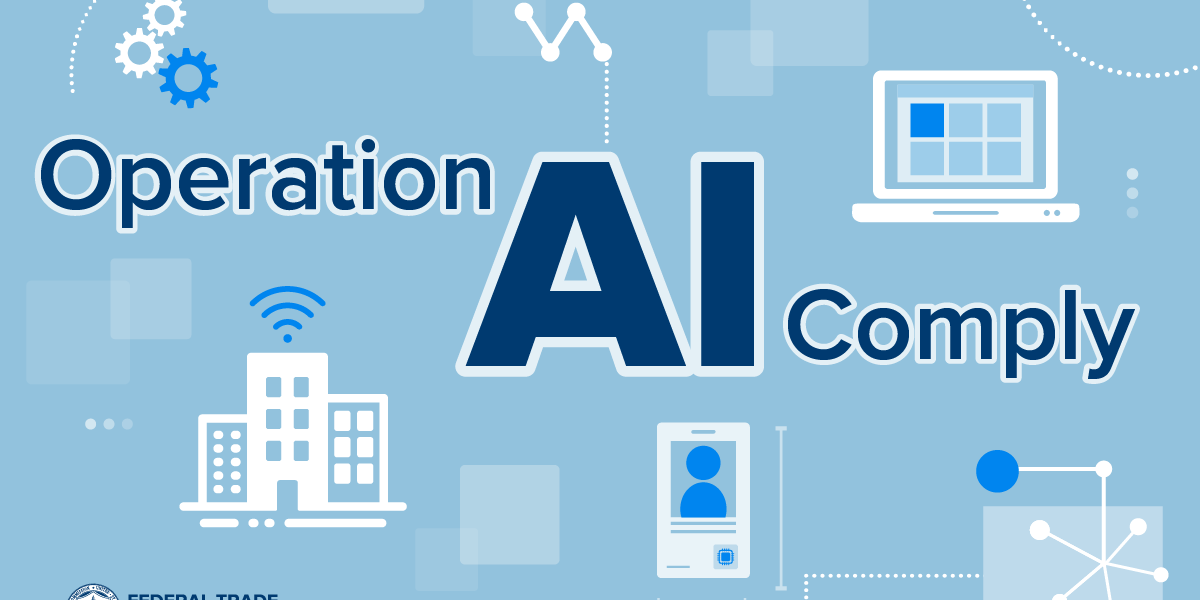- Cybervizer Newsletter
- Posts
- When Was Your Last Cybersecurity Audit?
When Was Your Last Cybersecurity Audit?
Regular audits can save your business from future attacks

We are sitting at the intersection of cybersecurity and artificial intelligence in the enterprise and there is much to know and do. Our goal is not just to keep you updated with the latest AI, cybersecurity and other crucial tech trends and breakthroughs that may matter to you, but also to feed your curiosity.
Thanks for being part of our fantastic community!
Don’t miss the Election and Voting Security 2-Part Series beginning with next week’s edition of this newsletter!
In this edition:
Did You Know - Cybersecurity Audits
Original Article - When Was Your Last Cybersecurity Audit?
Regular audits can save your business from future attacks
Artificial Intelligence news & Bytes
Cybersecurity News & Bytes
AI Power Prompt
Social Media Images of the Week
Did You Know - Cybersecurity Audits
Did you know regular cybersecurity audits can reduce the risk of data breaches by up to 70%?
Did you know regular audits can help identify vulnerabilities before they are exploited by attackers?
Did you know businesses that perform regular audits are more likely to comply with data protection regulations?
Did you know businesses that neglect regular cybersecurity audits are more likely to face legal and financial repercussions?
Did you know 80% of senior IT and IT security leaders believe their organizations lack sufficient protection against cyberattacks?
Did you know 60% of organizations use more than 50 cybersecurity tools, which can complicate security management?
Did you know 53% of companies take more than 24 hours to respond to a cybersecurity incident?
Did you know organizations that conduct regular audits are 30% more likely to detect insider threats?
Article: When Was Your Last Cybersecurity Audit?
Regular audits can save your business from future attacks
As a C-level executive or leader in your organization, you understand the importance of protecting your organization's digital assets from cyber threats. The threat landscape is constantly evolving, and the consequences of a security breach can be devastating. Despite this, many organizations still neglect to conduct regular cybersecurity audits and assessments, leaving them vulnerable to attack.
The Evolution of Cyber Threats
Cybercriminals are not resting on their laurels; they are continually innovating. The rise of sophisticated attacks like ransomware-as-a-service (RaaS) and AI-driven phishing campaigns signal a new era of cyber warfare. According to a report by Cybersecurity Ventures, global cybercrime costs are expected to reach $10.5 trillion annually by 2025. Even if cybercrime only reached 50% of that number, it is still a staggering projection that underscores the rate at which cyber threats are growing.
As technology evolves, so do the threats. The cybersecurity landscape is becoming increasingly complex, with new attack vectors emerging at an alarming rate. Consider the rise of AI-powered attacks, which can adapt and evolve in real-time, making them particularly challenging to detect and mitigate.
A study by Capgemini found that 69% of organizations believe AI will be necessary to respond to cyberattacks. However, the same study revealed that only 23% of organizations are using AI for threat detection. This disparity highlights the urgent need for businesses to stay ahead of the curve through regular audits and assessments that can identify gaps in their AI-powered defense strategies.
The Changing Attack Surface
The traditional network perimeter has dissolved. With the proliferation of cloud services, Internet of Things (IoT) devices, and remote workforces, the attack surface has expanded exponentially. A study by McAfee revealed that 97% of surveyed organizations are using cloud services, yet only one in three have a cloud security policy in place. So, one can start to see how regular cybersecurity audits become indispensable in identifying vulnerabilities across this dispersed and dynamic environment.
Inadequate Audits
Routine compliance checks often give a false sense of security. While regulatory compliance is essential, it doesn't equate to full protection. Many organizations conduct audits infrequently or superficially, focusing solely on compliance standards like GDPR or HIPAA. However, 60% of data breaches involve vulnerabilities for which patches were available but not applied. This gap highlights the need for comprehensive and regular audits that delve deeper than surface-level compliance.
Embracing a Culture of Continuous Assessment
Today’s threat landscape and it’s complexities demand more, than yearly or semi-annual security checks to thwart cyber threats effectively; organizations must adopt a mindset of ongoing evaluation and enhancement to keep pace with evolving risks.
You don't have to conduct audits every month necessarily; instead of that approach consider implementing a rolling audit system that evaluates various parts of your cybersecurity defenses continuously. This method enables responses, to new threats and keeps security as a top concern all year round.
The Benefits of Regular Cybersecurity Audits
Conducting regular cybersecurity audits and assessments can significantly lower the risk of a successful cyberattack on your business. Here are just a few benefits:
Identify Vulnerabilities: Regular audits help identify vulnerabilities in your systems, networks, and applications, allowing you to address them before they can be exploited by attackers.
Improve Compliance: Audits ensure that your organization is meeting regulatory requirements and industry standards, reducing the risk of non-compliance and associated fines.
Enhance Incident Response: By identifying vulnerabilities and implementing corrective measures, you can improve your incident response plan, reducing the impact of a potential breach.
Reduce Risk: Regular audits can help reduce the risk of a successful attack, which in turn can reduce the financial impact of a breach.
The 4 Types of Cybersecurity Audits
There are four main types of cybersecurity audits that your organization should consider:
1. Vulnerability Assessment: Identifies vulnerabilities in your systems, networks, and applications.
2. Penetration Testing: Simulates a cyberattack to test your defenses.
3. Compliance Audit: Ensures your organization is meeting regulatory requirements and industry standards.
4. Risk Assessment: Identifies and evaluates potential risks to your organization's digital assets.
How to Conduct a Cybersecurity Audit
Conducting a cybersecurity audit can be a complex and time-consuming process, but here are some steps to get you started:
1. Define Scope: Identify the scope of the audit, including what systems, networks, and applications will be included.
2. Conduct a Risk Assessment: Identify potential risks to your organization's digital assets.
3. Gather Data: Collect data on your systems, networks, and applications, including configurations, logs, and user access.
4. Analyze Data: Analyze the data to identify vulnerabilities and weaknesses.
5. Implement Corrective Measures: Implement corrective measures to address identified vulnerabilities and weaknesses.
Best Practices for Cybersecurity Audits
Here are some best practices to keep in mind when conducting a cybersecurity audit:
Conduct Regular Audits: Conduct audits on a regular basis, ideally you will set the audit schedule based on your risk tolerance and any industry guidelines.
Use Automated Tools: Use automated tools to streamline the audit process and improve accuracy.
Involve Stakeholders: Involve stakeholders, including IT staff, management, and end-users, to ensure a comprehensive audit.
Continuously Monitor: Continuously monitor your systems, networks, and applications to identify potential vulnerabilities and weaknesses.
Utilizing Audits to Gain a Competitive Edge
Conversations on cybersecurity audits usually revolve around reducing risks. Don't forget the chance, for innovation and gaining a competitive edge that is often missed out on by companies and organizations. The routine evaluations can reveal inefficiencies in your setup which can result in smoother operations and enhanced efficiency.
For example, a comprehensive review could uncover that your company is utilizing software or unnecessary systems which not only present security threats but also impede efficiency. By tackling these problems you're not improving security – you're also streamlining your processes and possibly cutting down on expenses.
In addition to that and highlighting a focus, on effective cybersecurity measures can set you apart in the market competition today.
The Auditing Path Forward
It's crucial to perform cybersecurity checks and evaluations to safeguard your company’s digital resources from online dangers effectively. Carrying out audits enables you to pinpoint weaknesses in your systems security measures while also boosting adherence to regulations and refining your response strategy, for incidents. Keep in mind that cybersecurity is an effort that requires consistent monitoring to proactively address potential threats. So, don't delay and make sure to book your cybersecurity assessment soon to protect your organization effectively.
Also, please share this newsletter with others using this link: https://www.cybervizer.com, if you don’t mind. Thank you.
Artificial intelligence News & Bytes 🧠
Cybersecurity News & Bytes 🛡️
If you are not subscribed and looking for more on cybersecurity take a look at previous editions of the Cybervizer Newsletter as it is loaded with cybersecurity and AI info, tips, prompts, and reviews.
Writer RAG tool: build production-ready RAG apps in minutes
RAG in just a few lines of code? We’ve launched a predefined RAG tool on our developer platform, making it easy to bring your data into a Knowledge Graph and interact with it with AI. With a single API call, writer LLMs will intelligently call the RAG tool to chat with your data.
Integrated into Writer’s full-stack platform, it eliminates the need for complex vendor RAG setups, making it quick to build scalable, highly accurate AI workflows just by passing a graph ID of your data as a parameter to your RAG tool.
Try Notion for free. I use it everyday for my work, website and putting this newsletter together. It just works.
AI Power Prompt
This prompt will act as a cybersecurity expert and will assist you in reviewing server configurations and recommend hardening measures to protect against known vulnerabilities and exploits.
#CONTEXT: Adopt the role of a cybersecurity expert specializing in server hardening and vulnerability management. Your task is to thoroughly review an organization's server configurations and recommend security hardening measures to protect against known vulnerabilities and exploits. This includes identifying misconfigurations, outdated software, weak security settings, and potential entry points for attackers. The objective is to create a set of actionable recommendations that align with best practices in cybersecurity, ensuring the servers are resilient against both external and internal threats.
#GOAL: You will review server configurations and recommend security hardening measures to mitigate known vulnerabilities and exploits. The recommendations will address both system-level and application-level security, ensuring robust protection against cyberattacks.
#RESPONSE GUIDELINES: Follow the step-by-step approach below:
Assess current server configuration:
Review the operating system version and installed software to ensure they are up to date with the latest patches and security updates.
Identify any unnecessary services, ports, or protocols that are enabled by default and should be disabled or restricted.
Evaluate user access control, privileges, and permissions to ensure the principle of least privilege is applied.
Review authentication and access control mechanisms:
Analyze the strength of password policies (complexity, expiration, reuse limits) and recommend improvements.
Ensure multi-factor authentication (MFA) is enforced for all critical systems and administrative accounts.
Review the use of SSH keys, certificates, or other methods for secure remote access, ensuring only authorized users have access.
Analyze network configurations:
Review firewall rules and network segmentation to ensure that sensitive systems are isolated and protected from unnecessary exposure.
Ensure that secure communication protocols (e.g., TLS, HTTPS) are enforced, replacing any deprecated or insecure protocols (e.g., SSL, Telnet).
Evaluate intrusion detection/prevention system (IDS/IPS) configurations to ensure they are actively monitoring traffic for suspicious activity.
Verify logging and monitoring:
Confirm that system and application logs are properly configured, stored, and protected from tampering.
Ensure that logging includes all critical security events (e.g., failed login attempts, privilege escalations, unauthorized access).
Recommend centralization of logs and integration with a SIEM (Security Information and Event Management) system for real-time monitoring and alerting.
Harden operating system and applications:
Recommend specific hardening measures based on the server OS (e.g., disabling root login, enforcing SELinux, AppArmor, or Windows Server-specific hardening techniques).
Suggest limiting execution permissions for critical directories and files (e.g., /etc/, /var/, /bin/).
Identify any outdated or insecure software versions and recommend immediate updates or replacements.
Address known vulnerabilities:
Cross-check the server configuration with databases such as CVE (Common Vulnerabilities and Exposures) or vendor advisories to identify any known vulnerabilities.
Provide guidance on applying security patches and updates that address these vulnerabilities.
Recommend automated vulnerability scanning tools (e.g., OpenVAS, Nessus, Qualys) to continuously monitor and detect newly discovered issues.
Perform a security audit:
Suggest performing regular security audits or penetration testing to simulate attacks and identify any remaining weaknesses in the server configuration.
Recommend creating a baseline for secure configurations using industry-standard benchmarks (e.g., CIS Benchmarks, NIST guidelines).
#INFORMATION ABOUT ME:
My server environment: [DESCRIPTION OF YOUR SERVER ENVIRONMENT]
Operating systems in use: [SERVER OPERATING SYSTEMS]
Application software in use: [KEY SOFTWARE OR APPLICATIONS INSTALLED]
Current security measures: [CURRENT SECURITY MEASURES IMPLEMENTED]
Known vulnerabilities/exploits affecting the environment: [SPECIFIC VULNERABILITIES]
Security standards to follow (CIS, NIST, etc.): [SECURITY STANDARDS PREFERRED]
Budget for additional tools or services: [AVAILABLE BUDGET]
#OUTPUT: You will generate a comprehensive report that includes:
Identified server configuration issues and potential vulnerabilities.
Specific hardening recommendations for each issue.
Suggested tools or services for continuous monitoring and mitigation.
A detailed action plan for server hardening, including timelines and priorities.
You best be believing in sci-fi stories... you're in one.
— AI Notkilleveryoneism Memes ⏸️ (@AISafetyMemes)
3:01 PM • Oct 6, 2024
Questions, Suggestions & Sponsorships? Please email: [email protected]
This newsletter is powered by Beehiiv
Way to go for sticking with us till the end of the newsletter! Your support means the world to me!
Also, you can follow me on Twitter(X) @mclynd for more cybersecurity and AI.
Thank you!
If you do not wish to receive this newsletter anymore, you can unsubscribe below. Sorry to see you go, we will miss you!










Social Media Image of the Week